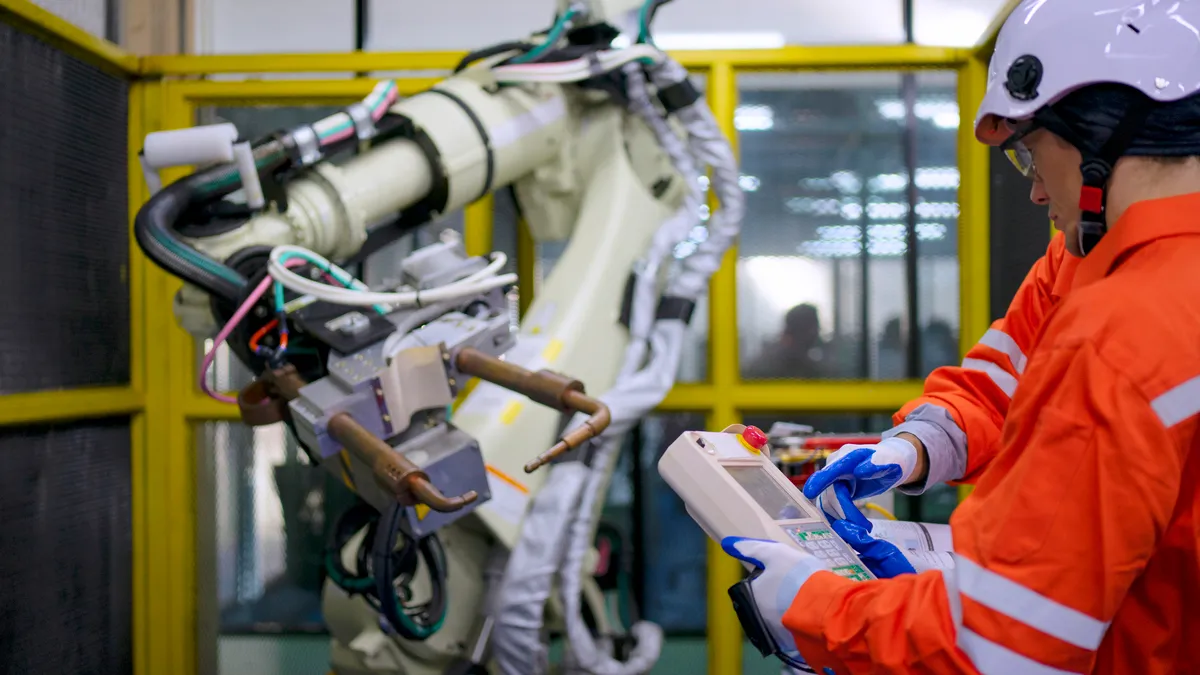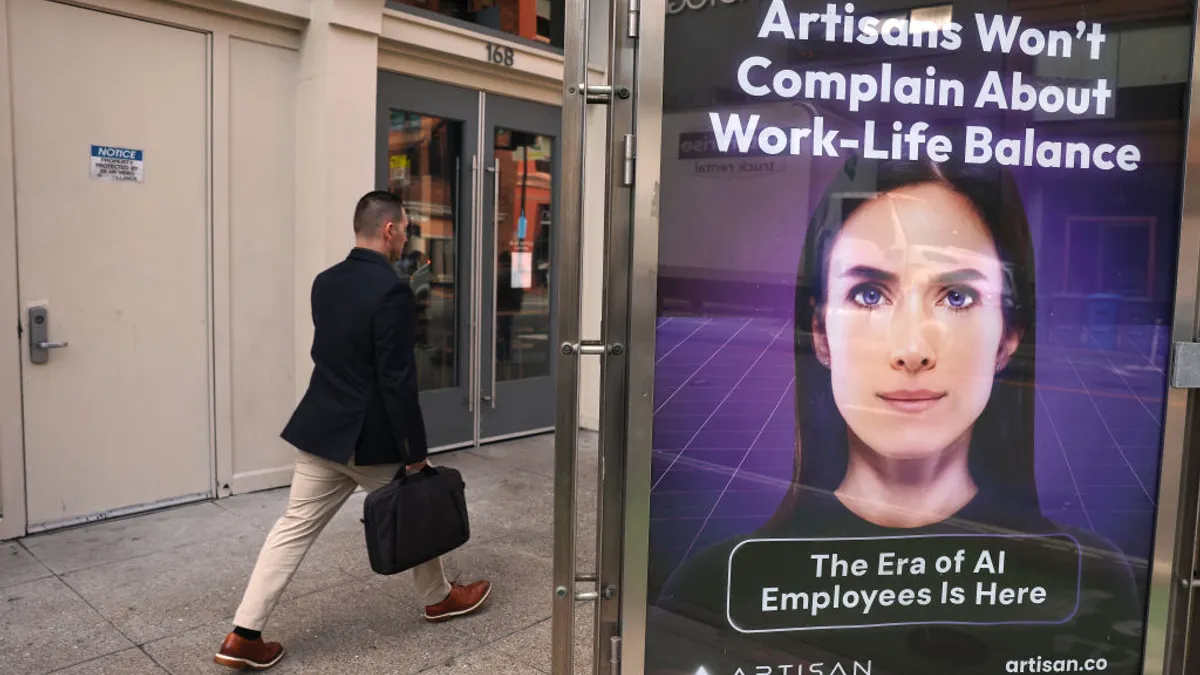As hiring continues to get harder — whether because of skill gaps, competition or other factors — recruiters are looking for ways to create a steady stream of applicants.
The U.S. Bureau of Labor Statistics (BLS) verifies recruiters' pain. In October of this year, they reported the ratio of unemployed persons per job opening was down to 1.4 in October 2016, nearly half the 2.7 per jobs level seen in 2013. Smart recruiters are looking at the overlooked — talent pools ripe for the picking, that can yield committed, long-term hires.
HR Dive took a look at many this past year, and we’re adding more to consider for the next.
1. Individuals with disabilities
The silent minority when it comes to hiring, more than 12% of the U.S. population is living with a disability. Only 26% of people with a disability who held at least a bachelor's degree were employed in 2014, according to BLS. The rate of employment for college graduates with no disability: 75%. Yet this community is big on commitment: one study found employees with a disability had a retention rate of 80% after one year. Every state and many municipalities have programming to tap into this vast labor pool. In addition to helping employers with their Americans with Disabilities Act compliance, most programs assist with equipment and technology to accommodate workers.
Carolyn Slaski, EY Americas Vice Chair of Talent, details a successful, symbiotic relationship her firm has created in this community. “EY has a long history of an inclusive culture that is welcoming to everyone, and aims to foster an environment and culture where people of all physical, cognitive and mental health abilities can feel support and be successful. In 2016, EY initiated a neurodiversity pilot."
EY recognized that the abilities exhibited by some people on the autism spectrum fit with areas the firm identified as areas of growing business need, she said. Efforts focused on recruiting candidates with excellent technical and mathematical abilities as well as an aptitude for details. Through a customized screening and training process, individuals with those skills were hired as accounting support associates to form a core piece of a "new center of excellence" in EY's Philadelphia office, Slaski said. The specialized talents and diversified background and experience the firm was able to tap into through its efforts helped boost efficiency, profitability and sustainability, she added.
Success requires commitment, she said, noting that the support of leadership is critical to success. “Ultimately, we believe that connecting with these unique groups of individuals comes down to an organization’s culture and values. For our neurodiverse employees, we have provided training to our own managers to help them communicate most effectively with individuals on the spectrum. We believe teams thrive when members bring diverse perspectives and backgrounds to the table. Therefore, we make it our responsibility to propel these unique experiences forward in order to build better outcomes for our business.”
2. Veterans
Veterans are a popular talent pool these days, and well they should be. They are disciplined and committed employees, research shows. A study by the U.S. Department of Education reported that veterans with disabilities placed in jobs through a vocational rehabilitation service had an 85% retention rate after one year. There also are tax credits and training programs available to help ensure veteran’s success, such as the Veterans' Employment and Training Service (VETS).
Rebekah Kowalski, Vice President, Client Workforce Solutions at ManpowerGroup knows the value of veterans. “With their training, discipline and relevant skills, veterans are a great source of talent that can be upskilled for tomorrow’s roles. ManpowerGroup has partnered with Rockwell Automation on a ground-breaking new initiative to upskill 1,000 US military veterans per year by 2019," she said.
Manpower established an Academy of Advanced Manufacturing focused on filling the talent gaps manufacturers face in finding instrumentation and automation technicians. In setting the program up, Kowalski said the firm asked employers what the key characteristics of a successful employee were.
"The qualities we heard most often were grit, determination, a team attitude, and the dedication to effective problem solving. Veterans embody all of these,” she said.
Kowalski said employers can help bridge the transition from service to employment: “It’s important to note that employers also have to have a welcoming and inclusive culture for veterans who are motivated by being part of a team and who put team before the individual. This is what most organizations are trying to find, but they need to put careful thought into how they support that teaming culture to maximize the inherent strengths of the veteran community.”
3. Seasoned gig workers
Surprisingly, older workers are driving the gig economy at a higher rate than their tech-savvy millennial counterparts. While millennials are all about flexibility, older workers are looking at freelancing as a means to keep their skills fresh without the 9-to-5 commitment.
In addition to providing talent on demand, this labor pool frequently identifies as independent contractors — saving employers a wealth of tax and benefit costs, if they're truly contractors. Employers already seem to be recognizing this, as these workers are poised to represent 30% of the workforce by 2020.
4. Apprenticeship programs
Not just for the trades anymore, apprenticeship programs are popping up for all types of jobs – with the newest trend toward white collar workers. There is a strong focus on STEM careers at the national level, including a laser focus from DOL. Additionally, many companies are creating their own on-the-job training programs to address the skills gap.
5. Ex-convicts
With U.S. prisons releasing 10,000 inmates per week, a wealth of talent is available for those companies who choose to tap into it. As “ban the box” legislation continues to spread nationwide, opportunities for the reformed are increasing.
Many businesses are eligible for the Work Opportunity Tax Credit if they hire within one year of release. Some ex-felons have spent their incarceration earning high school or advanced degrees, or learning a trade, and many employers report high retention rates in this community.
6. Customers
For many employers, your best customers may be your best sales reps: they know your product line and promote it whenever they can. Why not bring them on board? For small businesses, your regulars could be your best salespeople. In larger companies, consumers who are passionate about your company may be a talent pool worth investigating.
7. Former and current employees
The policy of never rehiring a former employee is as outdated as the fax machine. Why not recruit from an applicant base that can hit the ground running? A shift in thinking might be your best solution here. Can you offer remote work or reduced hours? Flexibility could be key to tapping this market.
Again, the opportunity to hire someone who is familiar with the corporate culture and procedures is a good bet for recruiters. The same goes for your current workforce. Promoting current employees isn’t just good recruiting practice; it’s a motivational tool for all staff members.
The value of a diverse workforce
For many businesses and recruiters, the biggest challenge to sourcing from alternative applicant pools is taking the first step. But cultivating a relationship with outreach programming, picking up the phone to contact a former employee, or challenging your best customer to put on a nametag might attract a rich, successful talent pool you hadn’t before considered.
And at the very least, looking to alternative talent sources can diversify your workforce in beneficial ways. “Hiring from a limited pool of candidates, whether determined by age, race or another limiting factor, will in turn limit the ideas and creativity that comes into your organization," said Rosemary Haefner, chief human resources officer at CareerBuilder.
Diversity should extend not just to talent pools, but to cultural, regional and background diversity as well, she said. "As the market continues to expand globally, being able to understand and reach out to individual’s needs of people from other cultures, regions and backgrounds is paramount – a multicultural, talented and trained employee base can give you that key advantage. Make sure you’re conveying the right message and being inclusive in every step of the employment process,” Haefner said.





















